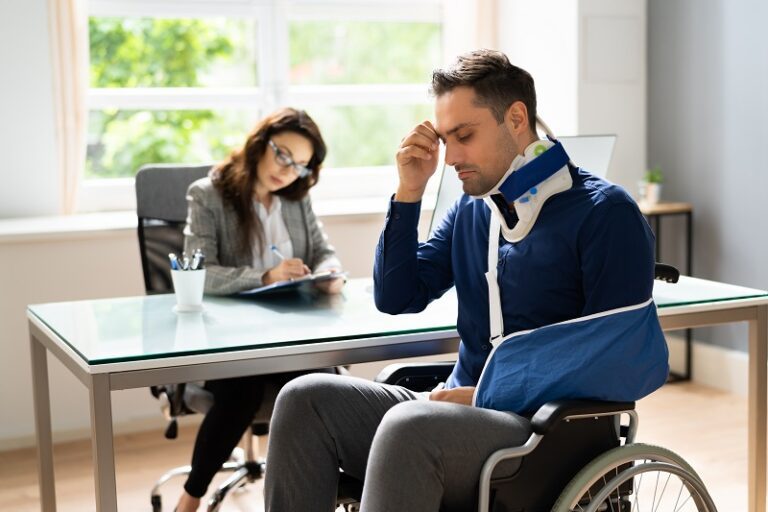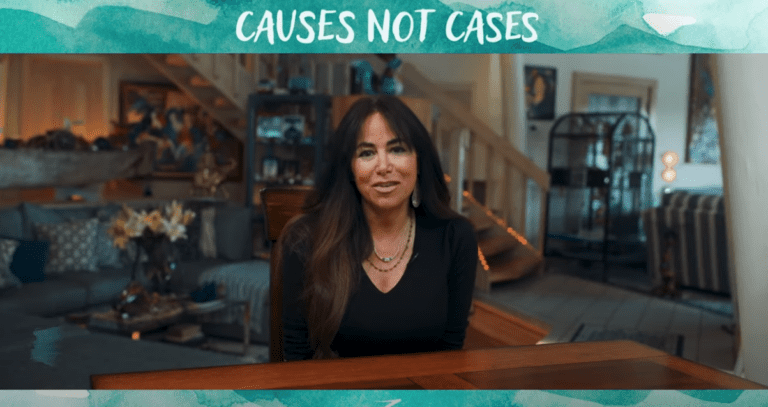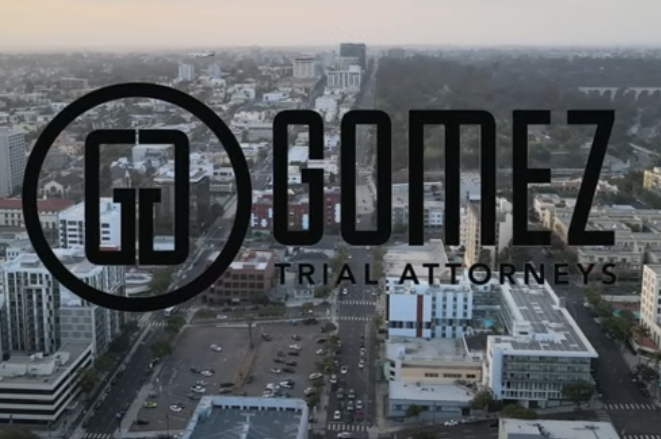Table of Contents
Most drivers are generally aware of what to do when approaching a yield sign, yet most have not brushed up on the rules of the road since their last defensive driving course. Yielding the right of way requires knowledge, practice, and basic hand-eye and foot-eye coordination.
Though every driver is capable of yielding the right of way, failing to yield is one of the most common causes of car crashes. The bottom line is some drivers struggle to yield in a timely manner, especially when faced with heavy traffic. This is your guide to everything you need to know about yielding right of way.
Pay Attention To Yield Signs
Have you noticed some drivers zoom right past yield signs? Other drivers intentionally reach a complete stop when faced with a yield sign. A surprisingly high percentage of drivers are indecisive when approaching an intersection with a yield sign. The presence of a yield sign makes it clear that drivers are to yield to traffic as it approaches.
In some instances, it is safe for drivers in the lanes that approach the yield sign to merge into traffic. However, if traffic is heavy, it might be necessary to slow down to 2 miles per hour, yielding to other vehicles or possibly even reaching a full stop to allow a stream of vehicles to proceed. If possible, drivers will avoid coming to a full stop as yield signs are a directive to slow one’s rate of speed while stop signs are meant to force a complete stop.
Though most yield signs are a net positive for traffic as they clarify which vehicles have the right of way, they also add a complex wrinkle to the driving experience. However, it is usually possible to slow one’s rate of speed before merging without reaching a complete stop.
When in doubt, check the language of the state’s yield sign laws and merging laws, as there is the potential for confusion, especially when yielding in challenging areas such as highways. Certain states require stopping prior to merging onto a highway on-ramp. A driver who blocks traffic in such an instance might face a penalty.
What if There Are No Signs?
If you approach an intersection without signs, proving one has the right of way becomes challenging. In general, a lane of vehicles has the right of way, especially if there is a considerable number of automobiles.
Alternatively, those who are emerging from a driveway or parking lot onto a street that lacks any sort of signage are to yield to others. If vehicles are positioned in the intersection, they have the right of way. Allow vehicles to proceed through the intersection before entering the flow of traffic.
There is also the potential for two vehicles to enter an intersection at nearly the same time. In such a scenario, the vehicle that entered the space first has the right of way.
The Right of Way in Parking Lots
Parking lots are often considered a “grey area” as these spaces are generally no-fault. As an example, if two vehicles back out of parking spots and strike one another, neither driver is at fault. However, if there is a sign or traffic signal in the parking lot, drivers are to follow those directives accordingly.
Most parking lots are spacious enough to accommodate two vehicles in each lane. However, some lots are smaller and have painted arrows that dictate the flow of traffic in one direction. Most lots typically paint parking spaces at angles to conserve space. However, such a design makes it challenging to traverse the lot by vehicle. In some cases, there is not enough room to accommodate two vehicles in a lane. When navigating lots, be mindful of directional indicators to prevent a wrong-way accident.
When two drivers are approaching a parking lot space, the driver that arrives at the space before the other has the right of way. A vehicle moving the wrong way in a parking lot lane does not have the right of way when attempting to enter a parking space.
If vehicles are moving in opposite directions in a parking lot traffic lane and the driver can cross the lane to access a desired parking space, he or she has the right of way. However, the caveat to this scenario is that the crossing driver only has the right of way if he or she arrives at the space before other drivers.
Points of Note for Parking Lot Driving
Driving an automobile through a parking lot is inherently challenging. Though such drivers have the right of way over those emerging from parking spaces, accidents are still possible. Ideally, drivers pulling out of spaces, whether in reverse or drive, will yield to those moving up and down the lot’s lanes. However, if a driver traversing a lot lane reaches a full stop and indicates he or she wants to occupy the parking space that a vehicle is exiting, the exiting driver can emerge accordingly.
Merging into a parking lot lane requires checking the flow of traffic heading in the opposite direction. Moreover, drivers emerging from parking lot spaces should also be aware that pedestrians might walk into the vehicle’s path or vicinity, posing yet another challenge.
It is a mistake to pull out of a parking space in front of a person or vehicle. Give the pedestrian the right of way, exercise patience, and you’ll exit the lot in due time. Remember, a vehicle that weighs several hundred pounds can easily inflict deadly force on a pedestrian.
Red Lights
The purpose of red lights is to control the movement of vehicles through intersections. Both stop signs and red lights clarify the right of way, though the right of way changes throughout the day and night.
When approaching a red light, pay close attention to its colors as well as the flow of traffic ahead of you. If the light is yellow, it is an indication that it will soon turn red, ultimately preventing vehicles from moving forward. However, if traffic ahead is light or proceeding orderly, it is possible to move through the intersection even though the light is yellow.
The law states that drivers who have yellow lights have the right of way. Those with red lights do not have the right of way. Alternatively, if the light is green or if there is a green arrow, it is an indication that drivers have the right of way to proceed through the intersection. If you are faced with a solid green traffic light above a left turn lane, it means you can turn left if no vehicles are approaching in the opposite direction. Such a scenario requires that you yield to traffic as it approaches instead of driving directly through the potentially dangerous intersection without stopping or at least slowing prior to eventually turning.
Imagine a scenario in which you approach an intersection in which there are no signs that indicate it is illegal to turn right on red. You spot a pedestrian entering the crosswalk that leads toward your vehicle. If such a person or driver is oncoming, it is your responsibility to yield.
If necessary, wait through the entirety of the red light until it turns green. If there is a green arrow, it is an indication that yielding is unnecessary. When in doubt, be patient, as turning right at a red light has the potential to lead to fines and other penalties.
Approaching an intersection with a red light requires mindfulness, awareness, and obedience to the law. Gradually tap your brakes as you approach the red light, slowing your vehicle until you are within a couple of car lengths of the vehicle ahead or the light itself. Do not slam on the gas pedal after the light turns green. Look both ways to see if a driver or pedestrian runs the red light. Slowly enter the intersection, gradually picking up speed as you progress.
Above all, do not attempt to “beat” a red light by racing through the transition from yellow to red. Moreover, it is a mistake to incrementally slow the vehicle in an attempt to time the light just right, passing under it as it transitions from green to red. Frustrating red lights are a necessary component of the driving experience.
Remain alert when stopped at red lights. Don’t check your phone or the radio, and avoid falling prey to any other distraction. Instead of fiddling with electronics or shuffling through radio stations or music tracks, watch the pedestrians, vehicles, pets, and other potential problems on the streets and sidewalks. Remain attentive while waiting at the red light and proceed in an orderly manner.
Flashing Red Lights
Plenty of drivers are uncertain as to what they are to do at flashing red lights. Such a flashing light is similar to a stop sign in that it indicates oncoming drivers are to reach a full stop before progressing through the intersection.
Once at a full stop, drivers are to look both ways to ensure other vehicles or pedestrians have not entered the intersection.
Stop Signs
Some intersections have stop signs at each corner, requiring all four drivers to halt. Such signs are marked as all-way stops. Other intersections have stop signs for vehicles moving in opposing directions in which those who reach the intersection first are to stop and proceed before the drivers who reach their respective stop signs seconds later. If two or more drivers reach an intersection’s stop signs at the same time, they are to yield to the vehicle on the right.
There is also the potential for stop signs to be placed in positions where there is no sign guiding cross traffic. Drivers facing such a stop sign are to stop and pause until there is an opening in traffic that allows them to proceed without danger. The failure to stop at such an intersection can easily lead to a potentially fatal T-bone-style collision.
Every driver should be aware that failing to yield the right of way at a stop sign, yield sign, or traffic light can spur legal liability. Always reach a full stop at intersections with stop signs or red lights, even if they look empty. Look twice in each direction after stopping and gradually proceed to join the flow of traffic.
Yellow Lights
Most people dread approaching intersections with yellow lights as they almost always lead to a slower rate of speed and an eventual stop in front of a red light. Yellow lights are an indication that the driver is to proceed cautiously as opposed to zooming through the light before it changes to red.
If you are tempted to press the gas pedal to make it through a yellow light, be aware that such a daring action might result in a ticket. Police officers have the authority to issue a ticket in such an instance if they observe the driver crossing the line to enter the intersection prior to the point at which the light turns red. Most police officers will not hesitate to issue a ticket, as racing through yellow lights is dangerous.
Some traffic lights have a brief transition period from yellow to red, meaning the light might remain yellow for only a couple of seconds. It is possible that a driver who is in a rush to get to work or elsewhere will race through the yellow light, mistime it, and end up driving through a red light. Proceeding through a red light has the potential to be deadly as opposing drivers who have the green light could be struck, T-boned, and injured or even killed.
Moreover, there is the potential for such hurried drivers to fail to properly navigate traffic after entering the intersection. Such drivers are frenzied and panicked as their attention is laser-focused on making it through the intersection while the light is yellow. The best approach to navigating intersections with yellow traffic lights is to slow the vehicle’s speed and err on the side of caution. Analyze the intersection in all directions before moving ahead.
The bottom line is slamming on the gas pedal to make it through a yellow light before it turns red is a danger to oneself and the surrounding community. Drivers are encouraged to refrain from such risky behavior, opting to reach a full stop and waiting for the traffic light to turn green.
Recognize the Importance of Yielding
Unsafe driving causes thousands of deaths every single year. The prevalence of motorist deaths is especially high at intersections, many of which have yield or stop signs. Reckless drivers who fail to properly navigate such intersections often cause:
- T-bone collisions
- Head-on collisions
- Rollover accidents
- Sideswipe collisions
These crashes have the potential to cause life-changing or even fatal injuries such as traumatic brain injuries (TBIs), broken bones, concussions, and spinal cord injuries.
If you have not yet encountered a driver who fails to yield or treats yield signs like stop signs, it is only a matter of time until you find yourself in such a situation. Some drivers even ignore yield signs, driving straight into traffic without using common sense or obeying the law.
Others awkwardly merge into traffic without leaving enough space between the vehicle ahead or behind them. Such drivers are considered negligent in the eyes of the law. Negligence is a term used by attorneys, juries, and judges to refer to a party’s failure to provide sufficient care to others in his or her vicinity. However, there are certain exceptions that allow for some flexibility in yielding.
Yield Accordingly
If you reach a yield sign well ahead of cross traffic and spot an unsafe driver approaching, it might be best to allow that party to proceed ahead of you. Yielding in such a situation has the potential to prevent a potentially deadly accident.
Unsafe drivers are those driving at high rates of speed and those driving erratically. Even an odd vehicle movement or wild hand gestures from another driver are indications that the driver is unsafe and cause for concern. It is not possible to predict a diver’s actions, especially if he or she has demonstrated unsafe driving practices, so don’t hesitate to yield.
Remaining several car lengths behind an unsafe driver is better than driving directly in front of such an individual. Reduce your rate of speed, yield to the oncoming vehicle, and consider pulling over to the side of the road after yielding to separate yourself from the unsafe driver.
If you spot another vehicle attempting to merge, yield appropriately. Attempting to merge into heavy traffic has the potential to lead to accidents and road rage. Drivers moving along in the main lane of traffic have the right of way, meaning drivers attempting to merge cannot cut those vehicles off. The burden is on the merging drivers to find an opening in traffic to complete the merge.
Common merging points are easier to navigate with the zipper approach. This approach involves each vehicle backing off to create sufficient space for another driver to enter. However, there is no law on the books that mandates a driver leave sufficient room for another to merge. Despite the lack of such a law, it is in the interest of everyone on the road for all drivers to execute safe merging practices highlighted by respectful yielding. Provide other drivers with sufficient space to move over, and the road really will be a much safer and enjoyable place.
Legal Liability in Failure-To-Yield Crashes
The average driver is understandably unaware as to which party is at fault in failure-to-yield accidents. Legal liability is often a complex puzzle, especially in merging accidents in which it is difficult to determine whether one party is completely at fault or if several parties are to blame. Determining fault for such accidents is important as failure-to-yield crashes have the potential to render one immobilized and unable to work.
The challenge lies in proving another party or several parties are at fault. The quality of the victim’s car crash attorney combined with the unique facts of the case ultimately determine which party will be found to be at fault for the accident. A driver who fails to yield is likely to be primarily legally liable for the crash.
As an example, consider a situation in which a driver drives through a red light or coasts through a stop sign without looking for oncoming traffic or pedestrians. The failure to reach a full stop is likely to trigger legal liability. There are also situations in which drivers have the right of way at an intersection or another point on the road share liability for the crash.
Speeding Drivers who Fail to Yield
Negligent drivers blow through stop signs and stop lights more often than most people assume. A speeding driver who runs a stop sign or stop light and causes a crash will likely be found legally liable for the accident as other drivers can do everything right and still end up hospitalized and unable to work as a result of another’s lack of civility.
We would be remiss not to highlight the fact that drivers in intersections have the right of way. Consider a situation in which a driver stalls in an intersection. Another vehicle cannot slam directly into the stalled vehicle and claim he or she had the right of way. In reality, the driver in the intersection who is hit by another driver after failing to yield might not have any legal liability or possibly have only shared liability.
Distracted Driving
Distracted driving can easily cause an accident at an intersection where one is supposed to yield. What looks like erratic driving near intersections might actually be the result of a distracted driver sending a text message, talking on the phone, or even surfing the web.
Use your mind’s eye to envision a situation in which you are attempting to merge into the flow of traffic. It looks like you have sufficient space for your vehicle. You begin to merge into the adjacent lane of traffic. A driver in the lane you are attempting to merge into rapidly increases or decreases his or her rate of speed.
Ensuing depositions reveal the driver who quickly and unexpectedly sped up or slowed down was distracted by his or her phone rather than focusing on the road. Though the distracted driver had the right of way by continuing to move forward in the lane he or she was in, his or her negligent actions caused the collision.
In such an instance, both drivers might share legal liability for the accident. The driver in the lane moving straight ahead is partially liable as he or she was texting while driving. However, it might also be determined that you share partial liability for attempting to merge without sufficient space.
How to Proceed in the Aftermath of a Car Accident
The actions you take after an auto accident shape your fate in terms of legal liability, finances, and health. Your health matters more than anything else. Dial 911 for immediate medical attention. Obtain the medical report from the treating doctor, as the information within that report will help establish a causal relationship between the crash and your injuries.
It is a mistake to keep the accident a secret between you and the other driver. If the other driver insists on handling the matter without reporting it to the auto insurers or the police, make it clear that doing so is illegal. Report the accident in a timely manner. Even if there is only minor damage or if your injury appears to be minor, it is still in your interest to report the accident. A brief call to 911 will notify emergency responders as well as police that an accident has occurred.
The responding police officer will create a police report that details exactly what occurred in the accident. The police report has the potential to help prove the crash is the true cause of your injuries. Establishing such a causal relationship is necessary to obtain financial compensation. Most car accident victims need a considerable amount of financial compensation to cover medical expenses related to the crash as well as lost wages, diminished earning capacity, and the loss of use of one or more body sites.
The moral of the story is to document everything in-depth with the assistance of authorities. Such a detailed and comprehensive approach helps your attorney prove the negligence of the driver who caused the accident and show that the accident is the cause of your pain and suffering.
You can help document the accident scene by taking pictures with your smartphone. Take snapshots of the accident scene, the damage to your vehicle, and also your personal injuries and those of your passengers. Such pictures will support your case as they reveal the positioning of the vehicles in the immediate aftermath of the crash. These images along with pictures of the damage inflicted on the vehicles help piece together the puzzle of which party caused the accident.
If you spot anyone in the vicinity of the crash, flag them down and use your smartphone to record their observations of the accident. Have each witness state his or her name and contact information on the recording for posterity’s sake.
FAQs
Do pedestrians have the right of way in a parking lot?
In general, parking lots are considered no-fault spaces for automobile drivers. However, there is also the potential for a car to strike a pedestrian in a parking lot. In the vast majority of scenarios, passengers have the right of way in parking lots. The specific circumstances and the minutia of the parking lot itself play a role in determining right of way and legal liability. However, it must be noted that a pedestrian who runs directly in front of a moving vehicle that is not stopped at a stop sign or crosswalk does not have the right of way.
Who has the right of way when entering a parking lot?
The vehicles entering the parking lot have the right of way. However, if a driver sees a pedestrian entering the parking lot, he or she should provide that individual with due care to sidestep a potential negligence claim. There is also the potential for business owners to add signs to the lot, essentially implementing the space’s own rules to facilitate the orderly flow of traffic.
When exiting a parking spot has the right of way?
Two vehicles exiting parking spots at the same time have the right of way as such spaces are generally considered no-fault zones. Each driver is at fault if they strike one another when exiting a parking spot. Instead of attempting to back out of a parking spot, back into the spot so you can pull outward with an unimpeded line of sight.
What to do when exiting a parking space?
Be on high alert when emerging from your parking space. If possible, back into the space so you can keep the car in “drive” when pulling outward. Look both ways before pressing the gas pedal. Slowly pull out of the parking spot to enter the flow of traffic toward the lot’s exit.
What does no parking on right of way mean?
It is illegal to park an automobile on a right-of-way road as doing so would impede traffic.
Schedule an Appointment With Gomez Law
Have you been injured in an auto accident? If so, the outcome of your case hinges on the attorney you select. Our car accident attorney, John Gomez, has successfully handled auto accident and personal injury claims for Californians and Floridians.
Reach out to us today to schedule a consultation and begin your quest for financial compensation. If you are in the San Diego area, you can reach us at (619) 237-3490. We also have offices in Riverside, El Centro, Temecula, and Solana Beach. If you are involved in an accident in the greater Tampa Bay or St. Petersburg area, give us a call at (727) 500-1076.







